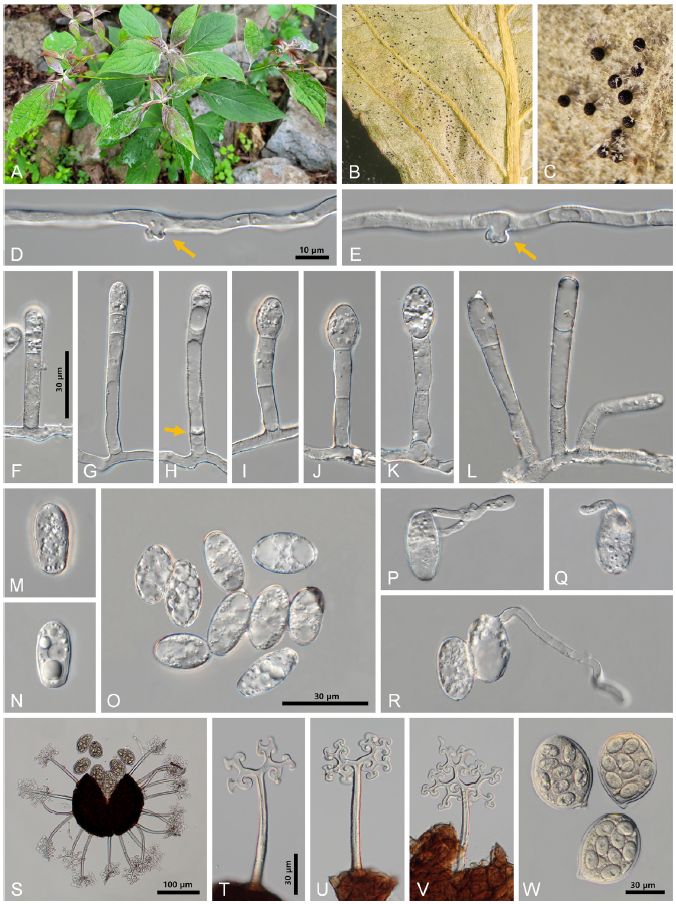Abstract
In Korea,
Figures & Tables

Fig. 1.Erysiphe cornicola powdery mildew on Cornus controversa . A: The powdery mildew infects the young leaves of Cornus controversa . B: Numerous chasmothecia formed on the lower leaf surface. C: Close-up view of chasmothecia formed on the leaf. D, E: Multilobed appressoria (arrows) formed on the hyphae. F-H. Young conidiophores. Note the round apex and long foot-cells. The arrow points to a slightly displaced basal septum. I-L: Conidiophores. Three conidiophores were formed on a hyphal cell (L). M, N: Primary conidia with apically rounded and basally subtruncate ends. O: Conidia. Note small oil drops. P-R: Conidia in germination. S: Chasmothecium with seven asci and 17 appendages. T-V: Chasmothecial appendages. W: Asci. Note eight ascospores each.


